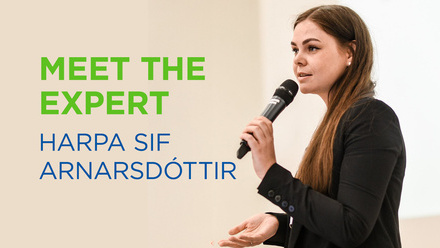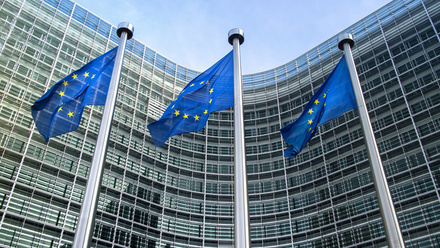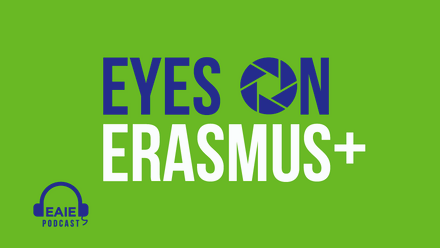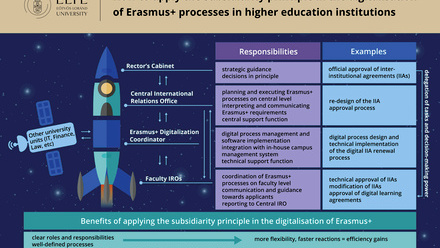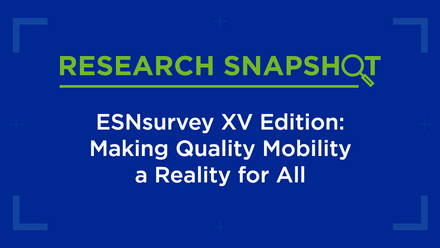Erasmus+: 6 updates to be aware of for the 2022 call for proposals

A new seven-year period for Erasmus+ was launched in 2021. The programme budget is almost doubled compared to the previous period, but the structure and actions remain familiar to us – with some tweaks and adaptations, the most important of which include stronger links to the overall European priorities of green and digital transformations, European identity and social inclusion. In practical terms, we have seen new measures in the mobility schemes for inclusion of under-represented groups, more green travel, and more digital/hybrid participation.
The first call came out after months of delay and with shorter deadlines for submitting their applications, due to delays in the negotiations of the overall EU budget in Brussels. With the COVID-19 situation on top of it, the situation for applicants and participants in Erasmus+ was far from ideal. So, what is the situation this year? All the details are not yet ready and will only be known when the revised Programme Guide is published later this year, but we do know a few things, the following six of which will be important to be aware of moving forward.
1) Call for applications
The call for applications will be back on track, with publication in late October/early November, and deadlines in the spring of 2022. This gives more time for applicants to prepare their projects. Challenges related to the IT systems apparent in the first call should also be solved by the next call, giving practitioners more time to focus on the content of their applications, rather than to technical issues.
2) More mobility
In the 2020–2021 academic year, student mobility decreased due to the pandemic, and the European Commission adapted the programme, shifting funds from mobility activities to cooperation projects. The coming year, mobility for students and staff will increase again and the funding line for mobility is adapted accordingly. Blended intensive programmes were launched under the mobility action already in the 2021 call, supporting higher education institutions to develop jointly blended mobility curricula and activities for students as well as academic and administrative staff, allowing for mixed online and on-site learning.
3) International credit mobility and capacity building
After a one-year hiatus, these items are back in the programme. This part of Erasmus+ is financed from the EU external relations budget lines, which have taken a longer time to finalise. The bulk of the financing goes towards collaboration with the Western Balkans and Africa, which aligns with the overall priorities for EU collaboration with non-EU countries. Capacity building projects support collaboration between higher education institutions in the Erasmus+ associated countries and their partners in selected regions and countries around the globe. The main new feature compared to the 2014–2021 edition of Erasmus+ is a division between smaller projects (for newcomers) and larger projects.
4) Partnership financing
Lump sums will replace unit costs in the financing of partnerships. This means, simply put, that the projects themselves can define the costs, instead of ticking off boxes with predefined rates. This provides more flexibility in the project management but will probably require a bit more work in the budgeting phase.
5) New project cooperation opportunities
Erasmus+ supports partnerships between higher education institutions in countries fully associated with Erasmus+ and with others. There are some new names replacing old ones – we no longer speak about "Knowledge Alliances", but instead about "Alliances for innovation", for example. Under the Key Action "Cooperation among organisations and institutions", we now find "Cooperation Partnerships" (not "Strategic Partnerships"). In 2022, we expect a call for proposals for the action called "Forward-looking projects", funding projects answering central challenges in education and training. There will also be a possibility for those who didn’t manage to respond within the tight deadlines this year to apply in the second call for the European Teacher Academies, a completely new action specifically targeting teacher education providers.
6) European Universities
We do expect a new call for European Universities this year. However, it is still not clear if the European Commission will open the door to new alliances in this call, or if the call only targets the first batch of European Universities coming to the end of their first financing period of three years. The final answer to this question will be clear when the call is published in the coming months.
The work programme and the programme guide for 2022 with all the details for Erasmus+ 2022–2023 are yet to be published. However, the six points summarised above may give practitioners a heads-up on what to expect, and some extra time to discuss with relevant colleagues and potential partners. Most importantly, we can all look forward to a more normalised year of Erasmus+, both in terms of procedures, timelines and activities.

